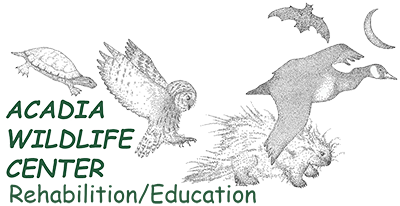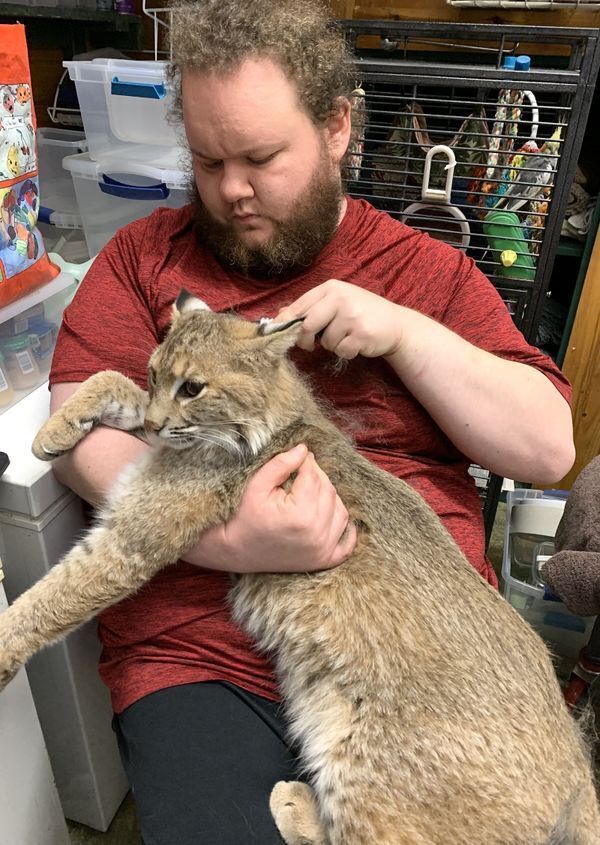
Welcome to our new website and our first blog post!
Hello everyone! We are so excited to be putting up a brand-new website with lots of content for you to enjoy. We will be posting a blog frequently to give more detailed looks at the progress of our patients, education programs, and all other Acadia Wildlife Center news!
First, we’d like to share a photo sent to us by our next-door neighbors. We are very pleased to see coyotes in our shared woods.

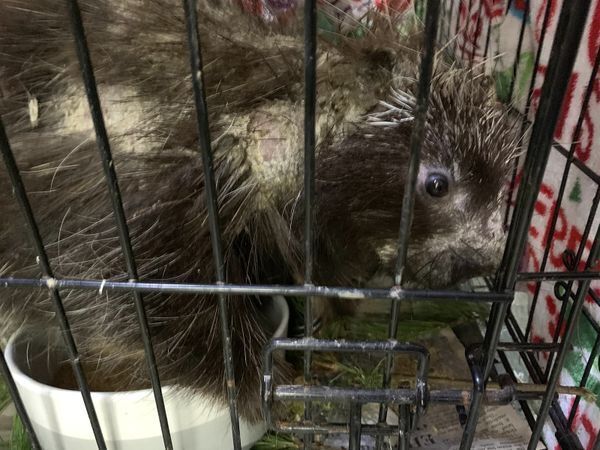
We have a group of porcupines at various stages of recovery from mange, doing well, and one that had a fungal infection as well as mange that is also progressing. They should all be on course to be moved outside and released back home in early April. Since it is difficult to tell males from females without radiograph or extensive handling (which they don’t approve of) we must be careful to release before babies could be born in late April through mid May.

Porcupine with mange
Mange is caused by mange mites which irritate the skin causing thick crusts on the face paws, and stomach. These crusts can cut off blood flow to feet, cover eyes and ears, making it difficult for these animals to climb to browse on branches, or forage for food on the ground. The animal slowly starves. The mites can be killed in a wildlife clinic using several doses of parasite control. Treatment included several months of antibiotics, handfeeding, and 4-5 doses of the medicine to kill the mites and ongoing eggs.
Then the animal has to grow in new fur and quills, go outside to adjust to weather, and regain muscle. It is always returned to the territory from which it came which is essential to its survival.
Other mammals also get mange but are much harder to catch like foxes and coyotes. There is evidence that the increase in mange in predators is caused by the weakening of the systems from the ingestion of rodenticide from targeted small mammals. Please let our magnificent predators do their job of controlling small mammal populations without poison in the food chain with rodenticide.

“Bernie” – porcupine with mange
“Bernie” the porcupine, named by his finders and friend to the social media giant @alfredtheporcupine is progressing nicely. He has had two treatments for the mange mite and the crusts formed by the mite are beginning to fall off. I think a bath is in order. It will take three more treatments to clear the mites completely; then he has to grow quills and fur back in; then go outside to regain muscle; then he will go home sometime in the spring. As you can see he likes apples, rodent chow, squash and other vegetables as well as branches. It has been suggested to me that Bernie might like to raise some money for his care and for the other porcupines in out clinic. We certainly need it and would appreciate any donations to help all our patients. Bernie appreciates it, our other porcupines appreciate it, perhaps
Alfred is also pleased. I am so pleased to hear that Alfred is better. Keep your eyes open for porcupines with sniffly noses. This is a symptom of a new lethal virus in the lungs. We can fix it if we get them in quickly.

Car hit Barred Owl, this one is recovering fast!
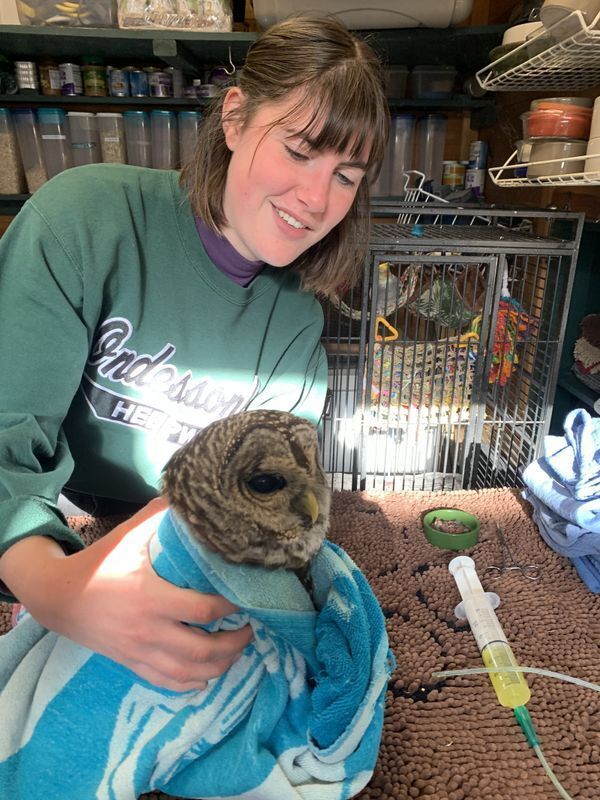
We’ve had a series of Barred Owls hit by cars with broken wings or concussions, and a first for us, a Short-eared Owl. Young Barred Owls in the fall are vulnerable to the mystery that is roads. People throw food scraps out their car windows, attracting small rodents which in turn are easy prey on the wide-open roads, for owls. As the owls get older, they become savvier about the dangers of cars, but during their first fall, they are frequent patients. Several have been blinded from their accidents, one had an unfixable broken wing, but one is awaiting release in an outside flight cage. They mate for life and live their whole lives on one territory, so it is vital that they be returned to their own spot. Kaiti, our clinic staff person is working on the initial exam, and the giving of electrolytes. We always give electrolytes first for shock, mixed with Vitamin B. Then depending on how starved they are we begin to introduce liquid food, then whole food. An animal with a concussion cannot feed itself, so quickly starves and needs help.
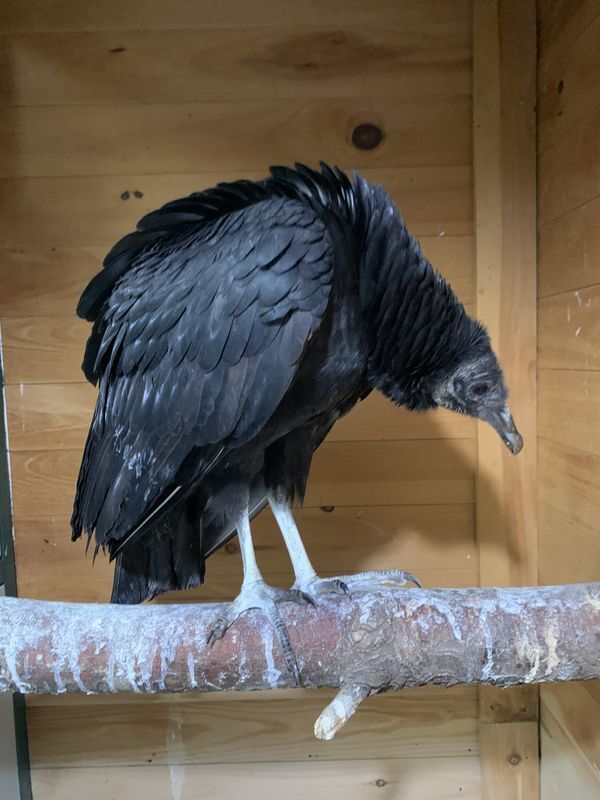
Black Vulture
Our juvenile Black Vulture is the star of the show, full of character and energy. In the spring we will attempt to find some others of his kind in Maine and release him with them, so please keep your eyes open. In addition, we are continuing to get Big Brown Bats in, found flying in houses when they should be hibernating, and a Mourning Dove who hit a window hard, but is recovering nicely and nearing release.
Tony Mullane our Executive Director just returned from attending the National Wildlife Rehabilitators Association yearly conference in Nebraska and is filled with ideas. He attended many leadership, capital campaign, fundraising, and federal IF&W seminars. Look out, he’s on a roll!
So welcome to our BLOG! We hope you enjoy it as much as we are and visit often.

